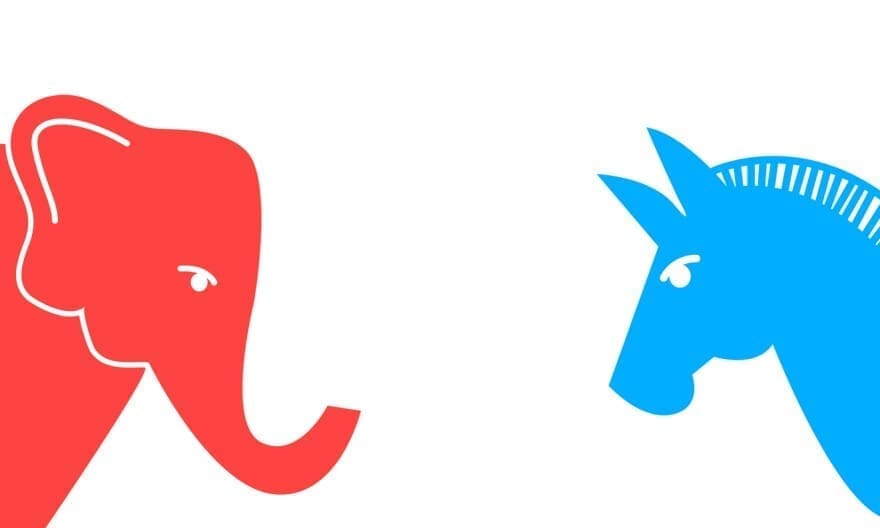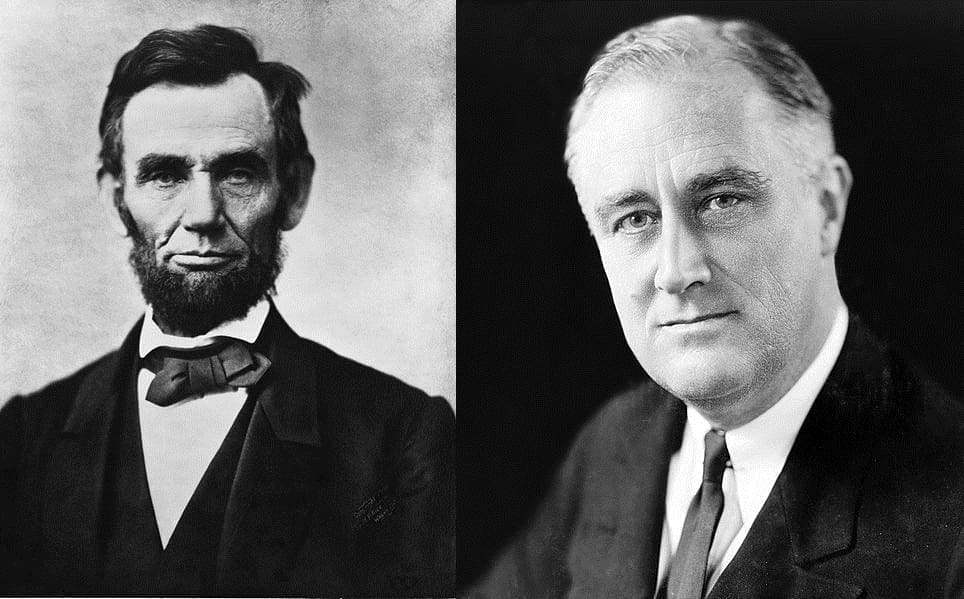Hakeem Jeffries: A Beacon of Hope for House Speaker?
November 14, 2024
Family Allegiance: The Intricate Web of Unquestioning Loyalty
November 14, 2024
The Great Political Flip: How Parties Swapped & Why? Is a Party Essential in Today’s World?
In the colorful world of politics, there is a mesmerizing phenomenon that has captivated historians and political enthusiasts alike – the great political flip! This thrilling dance of ideology and power has seen parties gracefully trade their colors, leaving everyone wondering how and why. Join us on this historical rollercoaster as we explore the fascinating tales behind the party swap and ponder the essentiality of political parties.
From Red to Blue: The Great Political Flip Unveiled!
Take a moment to visualize the United States political map. For decades, Republicans have been associated with the color red, symbolizing conservatism, while Democrats have embraced the color blue, representing progressivism. However, it may surprise you to learn that this association was not always the case. In fact, the great political flip of colors occurred relatively recently, in the late 20th century.

Left or Right?
The party switcharoo, as it is fondly known, goes beyond a mere exchange of colors. It transcends the aesthetic and delves into the realm of political ideals. Historically, Republicans were considered the party of progressive change, advocating for equal rights and social reform. Democrats, on the other hand, were often associated with conservative ideologies, striving to preserve traditional values. The party flip, like a magic trick, saw political ideals being tossed into the air, only to land in the waiting hands of their supposed adversaries. Progressivism found a new home within the Democratic Party, while conservatism settled comfortably within the Republican Party. This fascinating reversal left many perplexed, as the once clear lines of political ideology blurred.

Ideologies of the Past
At the outbreak of the Civil War, Republicans controlled the majority of northern states. The party sought to expand the United States, encouraged settlement of the west, and helped to fund the transcontinental railroad and state universities. Additionally, because of growing tension over slavery, many Republicans became abolitionists who argued against slavery.
Democrats represented a range of views but shared a commitment to Thomas Jefferson’s concept of an agrarian (farming) society. They viewed the central government as the enemy of individual liberty. Because most Democrats were in southern states, they fought to keep slavery legal.
Post-Civil War Policy
As the war came to a close, the Republican Party controlled the government and used its power to protect formerly enslaved people and guarantee them civil rights. This included the three Reconstruction Amendments, which won Republicans the loyalty (and vote) of America’s Black population. Unsurprisingly, most Democrats disapproved of these measures.
However, a change had begun in the Republican Party following the Civil War. Northern industrialists had grown rich from the war, and many entered politics afterwards.
These new wealthy politicians did not see much sense in supporting the rights of Black Americans when the nation was still largely white. By the 1870s, many in the Republican Party felt that they had done enough for Black citizens and stopped all efforts to reform the southern states.
The south was left to the white Democrats and their oppressive policies towards Black citizens after the Compromise of 1877 ended Reconstruction. With the end of Reconstruction, the “Solid South” voted for Democratic presidential candidates for the next 44 years.
A New Century
Almost 60 years later, the Great Depression became a catalyst for a massive political shake up. The Republican Party had continued to be dominated by wealthy businessmen, which meant that they had come to favor laissez-faire policies that supported big business.
These policies were effective when the economy was booming but were disastrous when they weren’t.
When the economy crashed in 1929, the Republican president, Herbert Hoover, opted not to intervene, earning him and his party the ire of the American public. Franklin D. Roosevelt, a Democrat, sensed the need for change. He campaigned on a promise of government intervention, financial assistance, and concern for the welfare of the people. This was a set of reforms designed to help remedy the effects of the Great Depression, which the FDR Presidential Library and Museum described as: “a severe, world -wide economic disintegration symbolized in the United States by the stock market crash on “Black Thursday,” October 24, 1929.”
He won the 1932 election by a landslide. It was FDR’s campaign policies that caused a major shift in party ideologies. Republicans opposed everything about FDR’s government. Primarily, they saw the growth of large government as harmful to the federalist foundation of the nation. This too has come to define the ideals of the Republican Party.
So, sometime between the 1860s and 1936, the (Democratic) party of small government became the party of big government, and the (Republican) party of big government became rhetorically committed to curbing federal power.
The Civil Rights Movement: Parties Trade Colors
Race and equality began to return to the center of politics in the 1950s and 1960s. Race did not necessarily fall into a party viewpoint at this point; instead, it was more of a regional issue. Southern Democrats and Republicans both opposed the early Civil Rights Movement, while Northern Democrats and Republicans began to support legislation as the movement picked up steam.
In 1964, Democratic president Lyndon B. Johnson signed the Civil Rights Act into law. In the 1964 election, Republican candidate Barry Goldwater publicly opposed the new law, arguing that it expanded the power of the federal government to a dangerous level.
It was this argument that led to a final, decisive switch. Black voters, who had historically been loyal to the Republican Party because of the 1866 Civil Rights Act, had already been switching to the Democratic Party.
However, upon hearing Goldwater’s argument against the 1964 Civil Rights Act, the majority of Black voters left the Republican Party in favor of the Democrats. They saw the Democratic Party as advocates for equality and justice, while the Republicans were too concerned with keeping the status quo in America.
As the 60s and 70s continued, Democrats sought reform in other places, such as abortion and school prayer. White southern Democrats began to resent how much the Democratic Party was intervening into the rights of the people.
By the 1980s, white southern Democrats had become Republicans, and the majority of the south was now Republican. The Republican Party now is solidly conservative while the Democratic Party is the liberal one.
Prior to this momentous 1980 presidential election, Republicans were often associated with the color blue. When Ronald Reagan secured a resounding victory, the media began depicting Republican-leaning states as red, marking the beginning of a new era in political color symbolism. As the elephant sported the donkey’s hat, it began to see the world through a different lens. Its once sturdy and traditional viewpoints became more open to change and empathy. The elephant found itself advocating for social justice, inclusivity, and even implementing environmental policies. It was a sight that left everyone bewildered yet filled with a sense of hope.
Why Did Parties Trade Beliefs? The Inside Scoop
So, why did parties willingly trade their deeply ingrained beliefs? The answer lies in the complex mosaic of social, economic, and cultural shifts that occurred throughout history. The party swap was not a spontaneous occurrence; it was a carefully choreographed dance of power and influence. As society evolved, and as parties repositioned themselves along the political spectrum, political parties adapted to maintain relevance and appeal to changing voter demographics. They aimed to attract new supporters while retaining their loyal base. They sought to align themselves with the prevailing tides, hoping to secure electoral success and maintain their grasp on power. This strategic move allowed parties to strengthen their chances of gaining control over the executive and legislative branches, thus shaping policies, and driving the nation’s trajectory.
Is a Party Essential? Exploring the Role of Politics
Now, let us pause for a moment and ponder the essentiality of political parties. Are they an inherent necessity for a functioning democracy? Some argue that parties serve as invaluable vehicles for shaping public opinion, mediating between citizens and government, and mobilizing individuals around shared values. Without parties, the political landscape may descend into chaos, lacking structure and unity.
Red, Blue, or Something New? The Party Dilemma
In the face of the party flip phenomenon, one may wonder if it is time to break free from the shackles of traditional party affiliations. Could it be that the time has come for a new wave of political representation, unencumbered by color-coded labels? After all, as society becomes more diverse and complex, it may be beneficial to reevaluate the role of parties and explore alternative paths to political participation.
One potential alternative to traditional party affiliations is the rise of independent candidates. These individuals are not bound by the constraints and ideologies of a particular party, allowing them to focus on the needs and concerns of their constituents without partisan interference. Independent candidates can offer fresh perspectives and innovative solutions to the pressing issues of our time, free from the constraints of party loyalty or the fear of facing backlash from party leaders.
Moreover, the party flip phenomenon has also revealed the limitations of the two-party system. In recent years, we have witnessed politicians switching parties due to ideological differences or a lack of alignment with the party’s direction. This constant shifting of political allegiances not only erodes trust in the system but also leaves voters disillusioned and without a clear choice that represents their values.
By breaking away from traditional party affiliations, we can create space for a more diverse and inclusive political landscape. It would allow for the emergence of new political movements that are responsive to the changing needs and aspirations of the population. Additionally, it would foster a greater sense of accountability among politicians, as they would no longer have the safety net of party loyalty to shield them from criticism.
Furthermore, the rise of social media and digital platforms has made it easier than ever for individuals to engage in political discourse and grassroots movements. These platforms offer a space for citizens to connect, organize, and voice their opinions outside the confines of traditional political parties. As a result, individuals can actively participate in shaping the political agenda and contribute to the decision-making process, rather than relying solely on elected representatives to do so on their behalf.
However, it is important to acknowledge that breaking free from traditional party affiliations poses its own challenges. Political parties have long played a crucial role in organizing and mobilizing voters, and they provide a sense of cohesion and structure to the political process. Without parties, there is a risk of fragmentation and an inability to form consensus on critical issues.
Shaking Up the Status Quo: The Party-Flip Phenomenon
The party flip stands as a testament to the ever-evolving nature of politics. It reminds us that change is not only inevitable but also a driving force behind progress. The swap of political colors and ideals challenges us to question the status quo, to explore new ideas, and to adapt our political systems to the needs and aspirations of a rapidly changing world.
In this era of constant flux, the party flip also serves as a powerful reminder of the importance of critical thinking and open-mindedness. It urges us to set aside our preconceived notions and biases, and instead engage in thoughtful discourse and analysis. By embracing this approach, we can foster a more inclusive and dynamic political landscape, one that encourages collaboration and the pursuit of common goals.
Moreover, the party flip encourages us to reevaluate our allegiance to a specific political party and instead prioritize the values and principles that truly resonate with us. It compels us to move beyond blind loyalty and instead demand accountability, transparency, and integrity from our elected officials. By doing so, we can ensure that our political leaders are truly serving the best interests of the people they represent.
The party flip also highlights the fluidity of ideologies and the importance of adaptability in the face of changing circumstances. It reminds us that no political party or ideology is immune to evolution, and that what may have once been considered radical can become mainstream over time. This realization challenges us to remain informed, flexible, and willing to challenge the status quo when necessary.
Furthermore, the party flip encourages us to actively participate in the political process, whether it be through voting, engaging in grassroots movements, or running for office ourselves. It emphasizes that each individual has the power to shape the political landscape, and that our collective voices can drive meaningful change. By taking an active role in politics, we can ensure that the party flip is not just a symbol of change, but a catalyst for progress.
In conclusion, the party flip is a testament to the ever-changing nature of politics and the necessity of embracing change in order to progress. It urges us to question, adapt, and reevaluate our political systems and ideologies, ultimately striving for a more inclusive, accountable, and responsive political landscape. Only through our active engagement and commitment to critical thinking can we harness the power of the party flip and create a brighter future for our society.
Parties on the Move: How the Tides of Politics Shift
So, dear readers, let us embrace the intrigue of the party flip and the fascinating tales it unravels. As we navigate the ever-changing landscape of politics, let us remain hopeful, engaged, and open to the possibilities that lie ahead. Whether red, blue, or something entirely new, the future of parties and political ideology is in our hands. Let us continue to dance to the vibrant rhythm of democracy, united in our pursuit of a better tomorrow.









